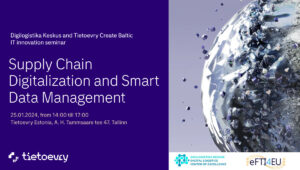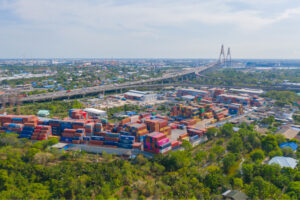There are five pillars:
Alternative Fuels – Accelerated implementation of low- and zero-carbon fuels, including electric, hydrogen, biodiesel, biogas, and e-fuels
Efficient Logistics – Digitalisation, automation, advanced routing, eco-trucks, and retiming
Efficient Vehicles – Materials and design, tyres, engine improvements, lubrification, and fleet renewal cycles
Efficient drivers – Driver monitoring, training, education, and certification
Collective Mobility – Integrated ticketing and timetables, service frequency, terminals and infrastructure, and awareness and promotion
Countries in all regions have committed to achieve net-zero CO2 emissions in their transport sectors by 2050. However, countries and regions have vastly different transport and energy landscapes. The specific mix of different solutions that will help advance one country’s commercial road transport sector to carbon neutrality will not work in other countries. This is as true for neighbours as it is for countries on opposite sides of the planet. In order to achieve progress towards carbon neutrality. or to move towards at least the desired 50% reduction in carbon content, it is first necessary to agree on a uniform methodology that would allow different regions, different fields and different countries to compare with each other. Until it is, everyone calculates their CO footprint by themselves, according to some formula, and applies the result in marketing to show their contribution to saving the environment. However, this does not improve our planet and living environment.
Why we need Green Transportation?
Ok, there are several reasons, but some main points can be bringed out:
- Green transportation can save you money on gas and maintenance costs in addition to being good for the environment.
- Traditional gas-powered automobiles are a viable alternative to electric cars and can improve your driving efficiency and lower your fuel costs.
- Reduce the number of cars on the road and share the environmental costs of transportation via carpooling.
- Governments may play a significant part in supporting green transportation by certain rules and incentives.
According to the CDP (Global Carbon Disclosure Project), companies will lose $120 billion by 2026 due to supply chain disruptions caused by environmental risks. As businesses digitize and expand their reach across geographies, logistics management has expanded its network to reach the last mile of the supply chain. Transportation is the wheel that propels this machine.
Green transportation encompasses all environmentally friendly modes of transportation. Green transportation refers to a company’s practices to ensure that its vehicles and other modes of transportation are environmentally friendly. Amazon recently made a significant contribution to green transportation by implementing electric vehicles as part of its effort to achieve carbon neutrality and similar decisions has been made by many last-mile providers. Another example of green transportation is reduced mileage between stops for drivers on multiple routes and that requires precise digital data.
Green vehicle conversion can save up to $750 in fuel costs for every 15,000 miles driven. Electric vehicle owners also benefit from lower maintenance costs. These long-term savings multiply exponentially for businesses that manage large fleets with high fuel and maintenance costs. Businesses that go green will benefit financially from shareholder investments and investing in sustainable transportation technologies as sustainable investing becomes more popular.
Going sustainable and green will increase the efficiency and productivity of any business. Route optimization and other green transportation strategies benefit the environment and your bottom line. Green transportation and supply chain management requires a holistic approach characterized by environmentally friendly and socially responsible methods that address environmental, economic, and social issues. Energy sources derived from fossil fuels such as natural gas, coal, and oil emit toxic gases leading to an increase in cancer and other cardiovascular diseases.
Sustainable transportation promotes community health by lowering emissions and air pollution. If more people used public transportation or green vehicles to commute, pollution levels would plummet, allowing people to breathe easier and live longer. For conclusion, eco-friendly methods will become an increasingly important topic as fuel prices rise and consumers emphasize combating global warming. Businesses can cut emissions by investing in all-electric vehicles, particularly road transportation, which accounts for a significant portion of global warming. Although replacing an entire fleet requires significant investment, you can replace older vehicles with fuel-efficient ones and integrate route planning and optimization tool that will save fuel and greenhouse gas emissions from your vehicles.
ETA – Critical for many Industry
ETA (Estimated Time of Arrival) is a critical element in the manufacturing industry. An ETA refers to the predicted time of arrival for a shipment or means of transport at its destination. Obtaining an ETA for a shipment in transit has a wide range of benefits, including promoting operational transparency between supply chain channels, improving customer relations by keeping them informed, building a better understanding of time-sensitive deliveries, and making further planning possible in the supply chain.
Inaccurate or delayed ETA can lead to disruptions in the supply chain, which can result in lost revenue, increased costs, and damage to the reputation of the manufacturer . Accurate ETA is crucial for efficient production scheduling, inventory management, and customer service. It allows manufacturers to plan their production schedules effectively, ensuring that they have the necessary materials and resources on hand when needed. It also enables them to provide their customers with accurate delivery times, which is essential for maintaining customer satisfaction.
In conclusion, ETA is critical for the manufacturing industry because it plays a vital role in supply chain management. It helps manufacturers to plan their production schedules effectively, manage their inventory efficiently, and provide their customers with accurate delivery times. Therefore, it is essential for manufacturers to focus on improving the accuracy of their ETA estimates to ensure the smooth operation of their supply chains.
How data networking and standardisation can help supply chain predictive planning?
Data networking and standardization will play a significant role in supply chain predictive planning. Big data analytics has emerged as a crucial tool in supply chain planning, which focuses on developing plans to operate supply chains, translating requirements to feasible programs, and optimizing outcomes. Data networking will help Supply Chain Planning process by providing real-time data on various aspects of the supply chain, such as inventory levels, production schedules, and shipment tracking. This data will be used to develop predictive models that can help manufacturers anticipate demand and optimize their production schedules accordingly.
Standardization is also essential in supply chain predictive planning. Standardization of data formats and communication protocols can help different supply chain partners share information more efficiently, reducing delays and errors. Standardization is also helping ensure that all parties are using the same metrics to measure performance, making it easier to identify areas for improvement and optimize the supply chain.
So, the data networking and standardization will help supply chain predictive planning by providing real-time data and enabling efficient communication between supply chain partners. By leveraging big data analytics and standardization, manufacturers can anticipate demand, optimize production schedules, and improve overall supply chain efficiency.




